Johannesburg Travel Guide
Built on the wealth of gold beneath its streets, the remarkable city of Johannesburg mushroomed from nothing to a modern metropolis in just over a century. There are wonderful restaurants, township tours, fantastic shopping opportunities, and the chance of exciting excursions to such diverse attractions as glitzy casinos, safaris, and prehistoric fossil fields.
The city illustrates the desperate inequality that characterises South African society, and the combination of palatial homes in glamorous suburbs and sprawling shanty towns shocks and challenges visitors. Crime is a serious problem, but Johannesburg is a proud city and some of the most exciting of the city's attractions can be found in the township areas where creativity and innovation often manage to triumph over poverty.
Johannesburg is a good place to learn about South Africa's apartheid history, with some great museums and tours dedicated to the subject. The city is also the gateway to South Africa's top game parks. Many who enter the country here would be well-advised to spend a few days in the City of Gold to experience this vibrant destination before or after they hit the bush.
Best time to visit Johannesburg
Summer in Johannesburg is between December and February, and perhaps the best time to travel to the city is over the Festive season (December, January) when South African schools are on their summer break and the city tends to empty out as residents head to the coast for their holidays. This leaves Johannesburg's attractions uncrowded and accessible, with late afternoon thunderstorms that cool things down. Winter days are also beautiful and sunny, but nights can be very cold.
What to see in Johannesburg
-Take a tour of Constitution Hill for insight into South Africa's turbulent legal history.
-Explore the fascinating city within a city that is Soweto.
-Visit the Apartheid Museum, one of the country's most renowned attractions.
What to do in Johannesburg
-Enjoy the vibrant cultural and nightlife hub that is the Newtown Cultural Precinct.
-Picnic in the beautiful Walter Sisulu National Botanical Gardens.
-Treat the kids to a fun day out and explore a mine at Gold Reef City theme park.
-Take an excursion to The Lost City, the famous casino, resort, and waterpark just outside the city.
Beyond Johannesburg
Johannesburg is the most common entry point for foreign visitors to South Africa and is well-situated to be a travel hub, particularly to the country's biggest and most popular national parks, which attract tourists wanting the safari experience. The Kruger National Park, undoubtedly one of the best game viewing destinations in the world, is a short flight or a five-hour drive from the city. For those interested in the origins and history of the human species, the Cradle of Humankind, just outside of Johannesburg, is a must.
Getting there
Johannesburg's O.R. Tambo International Airport, situated 14 miles (22km) east of the city, is the main gateway to South Africa, with connecting flights to most other tourist destinations in the country. The Gautrain provides fast and convenient transport into the city.
Did you know?
-Johannesburg is one of the youngest major cities in the world.
-About 40 percent of the planet's ancient human ancestor fossils have been found in the Johannesburg area.
-With more than 10 million trees, Johannesburg often tops lists of the most treed cities in the world.
Things to do in Johannesburg
Johannesburg has a variety of tourist attractions, including museums, art exhibitions and cultural experiences. There are also fun family outings and remarkable displays of local innovation and productivity. With good weather throughout most of the year, sightseeing in Johannesburg is always a rewarding adventure.
The first stop on any list of things to see in Johannesburg should be the Apartheid Museum, which documents South Africa's history of black oppression and its move towards democracy. Another must-see is the Cradle of Humankind, a UNESCO World Heritage Site which features the Sterkfontein Caves where the archaeologists excavated the ancient fossil of Mrs. Ples in 1947.
A tour of the Soweto township is an eye-opening experience. The tour will normally include several informative visits to museums and historic sites, as well as more relaxed laughs and adventures in the shebeens (bars).
On a lighter note, a fantastic Johannesburg attraction is Gold Reef City, a gold-rush-fashioned theme park full of exciting thrill rides. It incorporates some of the city's old gold mines and guides visitors down the old shafts if they want something more educational than rollercoasters.
While sightseeing in Johannesburg, visitors can tour the SAB World of Beer, which documents South Africa's proud beer brewing traditions, or take a scenic hike through the Walter Sisulu National Botanical Gardens. Newtown Cultural Precinct's Market Theatre and Museum Africa are also Johannesburg attractions worth seeing.
Kruger National Park
The Kruger National Park is South Africa's oldest, largest and best-known wildlife conservation area, home to a huge variety of wildlife and most famous for its 'Big Five' viewing opportunities. Visitors have an excellent chance of seeing lion, elephant, leopard, buffalo and rhino among the enormous variety of wildlife, including over 140 species of mammals, 500 species of birds, reptiles and amphibians. Situated on South Africa's northeastern border, Kruger is a primary destination for international tourists, and is visited by more than half a million local and international visitors every year. They are attracted by the different safari options as well as the park's excellent range of visitor facilities and choice of accommodation, from luxurious game lodges to cottages and camping.
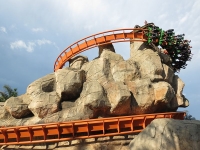
Gold Reef City
This huge entertainment complex is essentially a theme park full of thrill rides, but was designed to recreate Victorian Johannesburg during the gold-rush era. Situated five miles (8km) south of the city centre via the M1 motorway, the park was built around the No.14 Crown mineshaft that began operations in 1887 and closed in 1971. During its production years, 1,400 tons of gold came out of the shaft. Visitors can now descend into the old mine shaft to experience life at the rock face, and watch gold being poured and minted. Gold Reef City also houses a number of museums, and offers performances by traditional gumboot dancers and the like. Youngsters particularly enjoy rides such as the Anaconda, roller coaster and Thunder Mountain River Rapids.
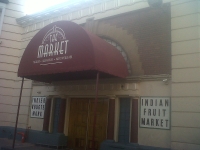
Newtown Cultural Precinct
Located in the city centre, this complex of buildings has been upgraded and restored as part of the city fathers' urban renewal policy and includes several attractions. For instance, the Market Theatre and Museum Africa are housed in a Victorian building in Bree Street, originally Johannesburg's fresh produce market. The Museum of Africa is particularly worth a visit, as its exhibits tell the city's story from its beginnings to the present day. The display includes an interesting section about the Treason Trial of the 1950s, in which Nelson Mandela and other activists were accused of plotting against the state. The same building houses a photography museum and the Museum of South African Rock Art.
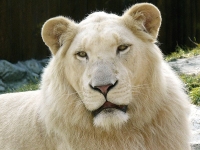
Johannesburg Zoo
The Johannesburg Zoo is a favourite place for locals to take a stroll. Its many enclosures house more than 320 species of animal, including polar bears that can be viewed underwater in their pool. Of course, the Big Five (elephant, rhino, lion, leopard, and buffalo) are all in residence, while other highlights include lemurs, gorillas, caracals, Siberian tigers, hippos, orangutans, brown bears, and cheetahs. The zoo's various monkeys are also very entertaining and visitors will appreciate the large collection of birdlife. The zoo is dedicated to conservation and rehabilitation and conducts some breeding programmes.
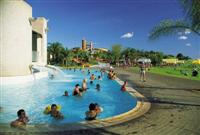
Warmbaths
The area known as Springbok Flats is part of the Great Rift Valley and lies on the national road north from Johannesburg. Bela-Bela town is located on the area's edge. Still commonly known as Warmbaths (the name officially changed in 2002), it is famous for its hot mineral springs. The springs yield about 20,000 litres of water every hour, all of which is enriched with sodium chloride, calcium carbonate, and other minerals. The town is a popular spa and holiday resort. The main resort, Warmbaths, has a large indoor pool with underwater jets, outdoor hot and cold swimming pools, jacuzzis, a wave pool, and several water slides.
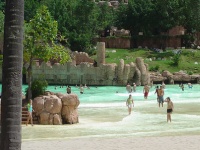
Lost City
Situated in the Bojanala region of the North West Province, the 'Las Vegas of South Africa' is one of the largest entertainment centres for adults in the world. Visitors can look forward to casinos, golf courses, live shows, and the architectural wonder of the Lost City. The vast resort complex is one of South Africa's top attractions for gambling, entertainment, and opulence. Guests will find a luxurious palace at its centre, where frescoes, palm fronds, mosaics and elephant tusks complement the resort's life-size model animals. Lakes, forests, and a tropical beach surround the Lost City. Along with a variety of water sports, guests can enjoy The Valley of the Waves, which is the most advanced waterpark in the country.
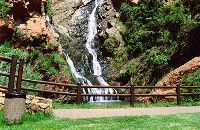
Walter Sisulu National Botanical Gardens
Johannesburg is one of the most densely treed cities in the world and has a number of pleasant parks and gardens. Among them, the Walter Sisulu National Botanical Garden is undoubtedly the city's most superb green lung. Located in the west of Johannesburg, this urban oasis covers 741 acres (300ha), and offers lush gardens and scenic hiking trails. The botanical garden was founded in 1982, with the area used consistently for hiking and outdoor excursions since the 1800s. Locals consistently rate it the best place to explore nature in Gauteng. The gardens are a terrific place for birdwatchers and garden-enthusiasts interested in seeing a variety of fauna and flora.

Melville
Melville is an old suburb known for its quirky, artistic atmosphere, eclectic little shops, pavement cafes, fun bars, restaurants, and clubs. This trendy suburb is a hive of activity on any given night of the week, and is the place to go out and carouse in Johannesburg for visitors who prefer a bohemian vibe to the preppy, upmarket nightlife that generally characterises the city. Seventh Street is the central zone from which all the character emanates and is a great place to start. Its collection of book and antique shops, cafes, and other interesting storefronts are well worth exploring. Partygoers barhop into the small hours, but tourists should refrain from walking around too much at night, and be aware of pickpockets.
The Apartheid Museum
Situated near Gold Reef City, the Apartheid Museum chronicles South Africa's tragic and shameful history of black oppression. On display are relics of the apartheid system, an abhorrent regime that denied people of colour basic freedoms and an equal life in the country. Visitors often describe the experience of the Apartheid Museum as harrowing. At the same time, the story of the struggle over adversity is inspirational and serves as an integral and important part of the new South African narrative and its reflections on history. To give some idea of the everyday realities of racial classification, visitors arbitrarily are classified as either 'white' or 'non-white' upon arrival and can only enter through their designated entrance.
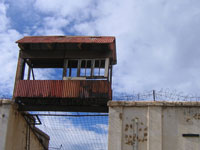
Constitution Hill
A guided tour of the National Heritage Site of Constitution Hill takes visitors on a journey through South Africa's turbulent past, but also illustrates its incredible transition into democracy. Tourists can visit the Number Four prison, a dark and terrible place where Mahatma Ghandi, Robert Sobukwe, and Nelson Mandela were all incarcerated, along with many other victims of the racial hierarchy. The Old Fort is also open to the public. Built in 1893, it was a prison for white men (including British prisoners of war) during the South African War, and one of Johannesburg's oldest buildings. Visitors may also be interested in the Women's Prison, where political activists such as Winnie Madikizela-Mandela endured terrible suffering, and infamous murderess Daisy de Melker was incarcerated.
Hector Pieterson Memorial Site and Museum
Hector Pieterson became the iconic image of the 1976 Soweto Uprising in Apartheid South Africa, when a news photograph of the dying Hector being carried by a fellow student was published across the globe. He was just 12 years old when the police opened fire on school children who had gathered to protest the imposition of Afrikaans as a medium of instruction in township schools. The protest was intended to be peaceful but became a violent confrontation when police demanded that the students disperse; students threw stones and police fired bullets. News of the bloodshed ignited uprisings across the country. The museum fuses memorabilia with modern technology and cultural history and is located two blocks away from where Hector was killed.
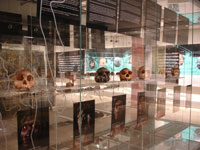
Cradle of Humankind and Maropeng Visitor Centre
The Cradle of Humankind is a UNESCO World Heritage Site and contains a complex of dolomitic limestone caves, including the well-known Sterkfontein Caves, where the fossil Australopithecus africanus (nicknamed Mrs. Ples) was found in 1947 by Dr Robert Broom and John Robinson. 'Mrs Ples' is estimated to be between 2.6 and 2.8 million years old and ranks high on the long list of australopithecine discoveries for that Sterkfontein is now famous. At present, only the Sterkfontein Caves and the Wonder Cave are open to the public. The Maropeng Visitor Centre is a stirring, world-class exhibition space, focusing on the development of humans and our ancestors and evolution over the past few million years.
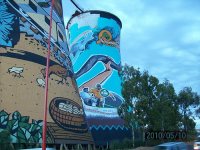
Soweto
Soweto's history goes back to 1903, when Kliptown was established as the first black settlement on the outskirts of Johannesburg. An abbreviation for South-Western Township, Soweto has had a turbulent history and was at the centre of the Apartheid struggle in South Africa. Today, Soweto is home to several famous landmarks, including Chris Hani Baragwanath Hospital in Diepkloof, Walter Sisulu Square in Kliptown, Regina Mundi Catholic Church in Rockville, and the Freedom Towers. A number of historic museums are also popular attractions in Soweto, including the Hector Pieterson Museum, and the Apartheid Museum. Tours of Soweto are a must for any first-time visitor to Johannesburg and South Africa, and a number of tour operators offer trips into Soweto.
Things to do with kids in Johannesburg
Johannesburg does not have a reputation as a family-friendly destination, mainly because it has a high crime rate. But in reality, there's no end to entertainment and attractions for kids in this bustling and busy city. Importantly, families should be perfectly safe if they take basic precautions and stick to safe areas.
A family holiday wouldn't be complete without a visit to the Johannesburg Zoo or the ever-enticing Gold Reef City. One of the most exciting attractions for kids in South Africa is the mammoth Lost City waterpark, casino and resort, which is a short drive out of the city.
Other great Johannesburg attractions for kids include fairy gardens, ice skating rinks, skate parks, adventure golf, go-kart courses, and adventure centres.
Johannesburg is a great city for shopping malls and these shopping centres tend to include all the indoor attractions kids might desire. There are also numerous beautiful wilderness areas nearby and families that love the outdoors can enjoy some spectacular hiking, camping, and mountain biking close to the city.
For a picturesque picnic setting, travellers can head to the Walter Sisulu Botanical Gardens. The world-class Maropeng Visitor Centre and famous Sterkfontein Caves at the Cradle of Humankind are also a must for those travelling with kids in the region.

Gold Reef City
This huge entertainment complex is essentially a theme park full of thrill rides, but was designed to recreate Victorian Johannesburg during the gold-rush era. Situated five miles (8km) south of the city centre via the M1 motorway, the park was built around the No.14 Crown mineshaft that began operations in 1887 and closed in 1971. During its production years, 1,400 tons of gold came out of the shaft. Visitors can now descend into the old mine shaft to experience life at the rock face, and watch gold being poured and minted. Gold Reef City also houses a number of museums, and offers performances by traditional gumboot dancers and the like. Youngsters particularly enjoy rides such as the Anaconda, roller coaster and Thunder Mountain River Rapids.

Johannesburg Zoo
The Johannesburg Zoo is a favourite place for locals to take a stroll. Its many enclosures house more than 320 species of animal, including polar bears that can be viewed underwater in their pool. Of course, the Big Five (elephant, rhino, lion, leopard, and buffalo) are all in residence, while other highlights include lemurs, gorillas, caracals, Siberian tigers, hippos, orangutans, brown bears, and cheetahs. The zoo's various monkeys are also very entertaining and visitors will appreciate the large collection of birdlife. The zoo is dedicated to conservation and rehabilitation and conducts some breeding programmes.
Eating Out
Johannesburg's role as the economic hub of South Africa, if not the entire continent, has attracted businessmen and investors from all over the world and a wealth of restaurants to cater for them. Johannesburg restaurants offer a wide range of cuisine, with ethnic African fare and traditional Afrikaans dishes, as well as international options to satisfy every craving imaginable. Dining out is a fun and important part of Johannesburg's social culture and should delight tourists.
Eating out in Johannesburg offers not only variety in cuisine ethnicity but price and quality too, with a range of upmarket, casual, fast-food, and street vendor options. Upmarket Johannesburg restaurants, featuring both local and international menus, are located in areas such as Rivonia, Sandton, Illovo, and Melrose Arch. More casual eateries, such as cafés and steakhouses, can be found in Parktown North and Benoni.
There are fast-food outlets throughout the city, as well as various local street vendors selling savoury pies, (sausage) rolls and flame-grilled (maize) cobs. The more adventurous diners could venture out to Soweto to dine at one of its numerous (communal bars, canteens). This huge variety of Johannesburg restaurants makes eating out in the City of Gold quite a rewarding experience.
Many restaurants are closed on Mondays, and reservations are recommended for fine-dining venues. Credit cards are almost always accepted at restaurants, but American Express cards are sometimes declined. A service fee may be added for large tables, but a tip of minimum 10 percent is expected by waitrons for good service.
Shopping
As the financial hub of Africa and home to its highest proportion of wealthy individuals, it is no surprise that Johannesburg is a true shopper's paradise. From designer boutiques and world-class specialist shops in the prestigious Sandton City to curios and bargain buys at local markets, Johannesburg has something for just about every kind of shopper.
The northern suburbs are the place to start a day of shopping in this bustling city, and Mandela Square provides a wonderful location at Sandton City for shoppers to take a load off and eat at one of the many restaurants surrounding the square.
The Bruma Flea Market specialises in African souvenirs and crafts such as wooden sculptures, paintings, beaded masks, and jewellery, and is highly recommended for those looking for something authentically African.
The Rosebank Rooftop Market, which is held on Sundays and public holidays on the roof of the Rosebank Mall, is an absolute must for bargain-hunters. There are also wonderful food stalls where shoppers can rest their legs and brace themselves for round two. Other popular shopping malls include Eastgate Mall, Northgate Mall and Fourways Mall.
Shopping hours in Johannesburg are generally from 9am to 6pm from Monday to Friday, and from 9am to 1pm on Saturdays. Smaller stores usually close on Sunday afternoons. VAT is 14 percent and is levied on all goods sold, excluding flea market purchases, and visitors can reclaim this when departing at airports or land borders, provided they produce the goods and all necessary receipts.
Nightlife
South Africa's biggest and richest city has got the nightlife to match, from world-class theatre and live music to mega-hip lounge bars and epic nightclubs. The locals are known to be keen socialites and tend to be very friendly and happy to meet new people.
Jazz fans should make their way to legendary Kippies in Newtown, and to the nearby Bassline. In fact, the young, hip and multicultural Newtown is a great place to begin night-time explorations of the city for anybody. The Civic Theatre hosts major live productions, while plenty of smaller venues have minor plays, cabaret shows, and reviews.
Nightclubs tend to open around 11pm and will charge an entrance fee. They stay open into the early hours and drinks can be expensive. Many top clubs are positioned in the lively city centre of Johannesburg, or areas such as Orange Grove and Melville.
The affluent suburbs of Sandton, Hyde Park, and Melrose Arch are home to the more plush and modern clubs frequented by an unlikely collection of models, stock brokers, and bikers.
Travellers who live for thrills should head for the many casinos on the outskirts of the city. Montecasino, near Fourways, and The Emperors Palace, near the OR Tambo Airport, are considered the best. Apart from the various gaming tables and slot machines, there are live shows aplenty.
Getting Around
Johannesburg is a sprawling city and the lack of convenient and safe public transport is often an obstacle to visitors. City transport consists of an unreliable bus network and a series of minibus taxi routes, neither of which operate much after dark.
The main bus terminus is at Gandhi Square in the city centre where there are timetables and route maps, but times are rarely accurate. Gautrain bus services only run to stops around Sandton. Alternatively, a sightseeing bus provides hop-on hop-off tours around the city in open-topped buses.
The quickest and cheapest way to get around is on a minibus taxi, an informal bus service that goes everywhere but has no schedule or formal stops and can be picked up at taxi ranks or hailed anywhere along its route. However, dangerous driving, overcrowding, and high crime rates at taxi ranks have deterred many from using them as a means of transport. If necessary, use them for short hops only and never with baggage.
Safer but far more expensive are metered taxis, which need to be booked in advance. The best way to get around is by private car and there is an excellent network of highways and well-maintained roads. There are a number of car rental agencies that require drivers to be over 23 years old and hold a full driving license. Uber also operates in the city.
A passport and credit card are also necessary. Drivers should keep their windows up and doors locked at all times, never leave anything visible in a parked car, and never stop for hitchhikers. They should also be aware that there is a risk of car hijacking. Visitors should remain alert, especially when leaving or returning to their car, and seek out secure parking.
Johannesburg Climate and Weather
Situated on the highveld plateau, Johannesburg has a subtropical highland climate with generally mild weather and plenty of sunshine. Between October and April (late spring, summer, and early autumn) it is hot with frequent thunderstorms in the afternoon. These dramatic storms are usually short-lived and shouldn't disrupt a holiday too much. It is just best to plan outdoor activities for the morning and midday when possible.
Between May and September (late autumn, winter and early spring) it is dry and sunny with cold nights. The sunny winter weather takes the edge off the cold, but after dark it can be freezing and the city is often covered in a layer of frost early in the morning. Snow is extremely rare. The average temperatures in summer, between December and February, range between 58.5F (14.7C) and 78F (25.6C), and in winter, between June and August, the average temperatures range between 39F (4C) and 62F (16C).
Johannesburg is a year-round destination but the best time to visit the city is over the festive season (December and January) when it is hot and sunny and the afternoon storms ensure the city is at its most lush and attractive. As an added bonus, the locals tend to spend holidays on the coast making Johannesburg pleasantly empty over the Christmas period. The winter months are also good for travel, but the city gets very dry and is not as attractive.
South Africa travel info
Electricity
The electrical current is 230 volts, 50Hz. Round, three-pin plugs and round, two-pin plugs are standard.
Language
South Africa has 11 official languages, including Afrikaans, English, Xhosa, Zulu, and Sotho. English is widely spoken.
Money
South Africa's currency is the Rand (ZAR), which is divided into 100 cents. Money can be exchanged at banks, bureaux de change, and the larger hotels. ATMs are widely available and major international credit cards are widely accepted. Visitors should be vigilant when drawing cash from ATMs, as con artists are known to operate there. All commercial banks will exchange foreign currency. hello
Tipping
Tips of at least 10 percent are expected for good service if a service charge is not included in the bill. Tipping for services rendered is widely anticipated by porters, taxi drivers and petrol attendants. Golf caddies should be tipped accordingly. 'Car guards' operate in the city centres and tourist spots and will offer to look after parked cars; they are usually immigrants from neighbouring countries looking for work and will expect anything from ZAR 8 upwards on the driver's return, depending on how long the driver will have been away.
Health
Travellers from areas infected by yellow fever must carry a vaccination certificate; otherwise no vaccinations are required. There is a malaria risk in the low-lying areas of the Northern Province and Mpumalanga (including the Kruger National Park), as well as northeastern KwaZulu-Natal, and precautions are advised when travelling to these areas, especially between October and May. Vaccinations are recommended for hepatitis A, hepatitis B and typhoid. Tap water is generally safe in urban areas but sterilisation is advisable elsewhere. Medical facilities in South Africa are good in urban areas, but medical insurance is strongly advised as private hospitals expect cash up front and public hospitals are best avoided. Medication is readily available in major cities, but those travelling outside of these centres for an extended period should bring a basic supply kit for emergency self-treatment.
Safety
It is worthwhile noting that the South African authorities give high priority to the protection of tourists and that, although crime rates are high, popular tourist sites and the main hotel areas tend to be safe. Still, travellers should remember that violent crime tends to be concentrated in pockets throughout the country and travellers should do some research to find out which areas to avoid. For instance, Berea and Hillbrow in Johannesburg are high-risk areas, and township areas in general are dangerous for foreigners.
There is a risk of petty, opportunistic crime in all urban areas and armed robberies are fairly common in Johannesburg. Travellers should always be aware of these risks and exercise the necessary precautions. Carjackings and smash-and-grab robberies are common in major cities. Doors should be locked when driving; bags and valuables should be kept out of sight. Travellers should not walk alone at night in any area, and should be vigilant when using ATMs. They should not display signs of wealth (mobile phones, money, expensive jewellery, cameras) on the streets. Credit card fraud is on the increase, meaning travellers should be vigilant and never allow their card out of their sight.
Nationwide power cuts (loadshedding) take place regularly, occurring many times a day for multiple-hour stretches. There is some risk that outages might interfere with telecommunications and security systems, hotels and other accommodations, as well as public lighting and traffic lights. Visitors can plan for power cuts by asking their accommodation provider how they mitigate loadshedding, and by checking planned power outages on the Eskom website or loadshedding apps. They can also carry a power bank with extra charging cables for electronic devices they need, and pack portable lighting such as torches.
Local customs
South African culture and etiquette in urban areas is very Western. While standards of dress vary, beachwear should generally not to be worn off the beach, and nude sunbathing is only permissible in a few designated areas. Homosexuality is legal and accepted in urban areas without much fuss, but is frowned on by some conservative South Africans and can be a problem in township areas. Although locals may complain loudly about the country and government, they will take offense if a foreigner is critical. Racism is a sensitive issue; however, interracial relationships are now common and widely accepted. South African racial terminology differs from what is acceptable in North America. The terms 'black' and 'white' are appropriate for those of African and Caucasian descent, respectively. 'Coloured' refers not to black Africans, but those of mixed African and European descent and is not considered an offensive term. South Africans are friendly and hospitable, and will often go out of their way to assist tourists who need help.
Doing business
Business practices in South Africa are influenced by South Africa's range of ethnicities, languages and even geographical areas, but in general follow common patterns. When doing business in South Africa it's important to be culturally sensitive and as understanding of colleagues' historical context as possible. Most South Africans prefer to do business with contacts they've met before, but they are also warm and open to newcomers. Working to build and maintain business relationships is vitally important in the South African business environment. South Africans are renowned for their friendliness, which generally supersedes business formality.
Most large corporations, as well as the banking and financial sector, still adopt relatively formal business practices, whereas other companies and work environments enjoy more relaxed and personable atmospheres. Clear management hierarchies and respect for senior executives and colleagues are of paramount importance. However, business exchanges and decision-making processes often take on an egalitarian aspect. As with most countries, punctuality is highly regarded, though government officials are notorious for their tardiness when it comes to keeping time. Dress codes tend to be conservative, but not overly formal. Suits are the exception more than the rule, but dressing stylishly will always count in a visitor's favour. It's best to dress formally for initial meetings.
South Africans value hard work and respect those who succeed, but are mindful of other aspects of life such as healthy living, family and nurturing relationships, all of which add up to a well-balanced life. Generally South Africans are regarded as relaxed and informal with regards to introductions and the handling of business cards. Shaking hands is common for both men and women. The giving of gifts is uncommon and unnecessary.
The official language of business in South Africa is English, and business hours tend to start at 8:30am or 9am and the day comes to a close at 5pm, or later in the major urban centres. Working over weekends tends to be quite rare in South Africa.
Duty free
Travellers to South Africa do not have to pay duty on 200 cigarettes, 20 cigars and 250g of tobacco; 2 litres wine and 1 litre spirits; perfume up to 50ml and 250ml eau de toilette; and other goods to the value of ZAR 5,000 per person.
Communications
The international access code for South Africa is +27. Mobile phone networks are available across the country, and there are roaming agreements with most international mobile operators. Mobile service providers offer very cheap 'pay-as-you-go' SIM cards, which are a good option for visitors staying for some time. Alternatively, travellers can use eSIMs if their cellular providers support it on their networks. WiFi is easily available, especially in the larger cities.
Passport & Visa
Passports should be valid for at least 30 days beyond the period of intended stay. An onward or return ticket is required, as is evidence of sufficient funds. Extension of stay for an additional 90 days is possible if travellers apply at least 60 days prior to the expiry date of their visa, permit or visa exempt period. There are special requirements for travelling to South Africa with children under the age of 18, and different requirements for unaccompanied children entering the country. Travellers should consult the nearest South African high commission or embassy for details. It is highly recommended that travellers' passport have at least six months' validity remaining after the intended date of departure from their travel destination. Immigration officials often apply different rules to those stated by travel agents and official sources.
Entry requirements
United States nationals need a passport valid for at least 30 days beyond intended travel. A visa is not required for stays of 90 days.
UK nationals need a passport valid for 30 days beyond the date of intended travel, but no visa is needed for stays of up to 90 days.
Canadian nationals need a passport valid for 30 days beyond the date of intended travel, but no visa is needed for stays of up to 90 days.
Australian nationals need a passport valid for 30 days beyond the date of intended travel, but no visa is needed for stays of up to 90 days.
Irish nationals require a passport valid for 30 days beyond intended travel, but no visa is needed for stays of up to 90 days.
New Zealand nationals require a passport valid for 30 days beyond intended travel. A visa is not required for stays of up to 90 days.
Useful contacts
South African Tourism, Johannesburg: www.southafrica.net
Emergencies: 10111 (Police), 10177 (Ambulance), 10112 (cellphone emergency number).


